 August
01
August
01
Tags
Are we in recession or not?
By David Nelson, CFA CMT
The administration, the press and some leading economists are having trouble with the term recession and its definition. So much so that it’s sparked a raging political debate with each side accusing the other of misleading the American people.
It doesn’t matter what talking heads including yours truly think. The American people already have made that decision. Most polls show, the majority of Americans believe we’re in recession.
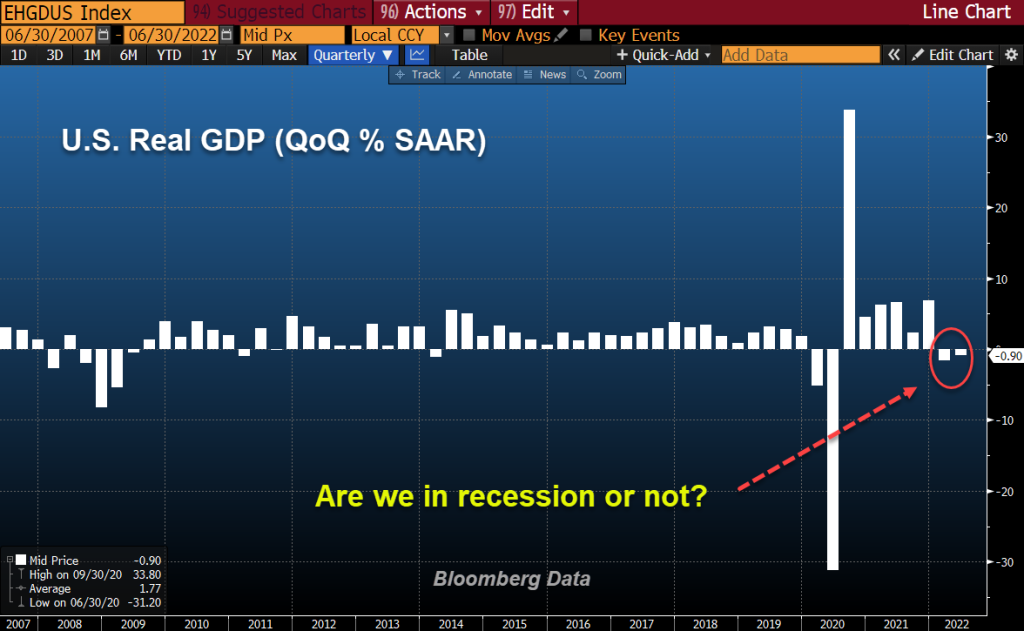
It matters because it ifluences future behavior and that’s exactly what the Federal Reserve wants. The Federal Reserve would much prefer demand slows letting supply chains catch up making their job that much easier.
Instead of living in denial a better approach would be to point out that the slow down is on the heels of unsustainable growth last year post the COVID recovery.
We’ve had two back-to-back quarters of negative GDP growth in part because of efforts by the FOMC to bring down inflation expectations. Consumer inflation is at 40-year highs and on Friday we got confirmation that there is still much to be done.
Inflation
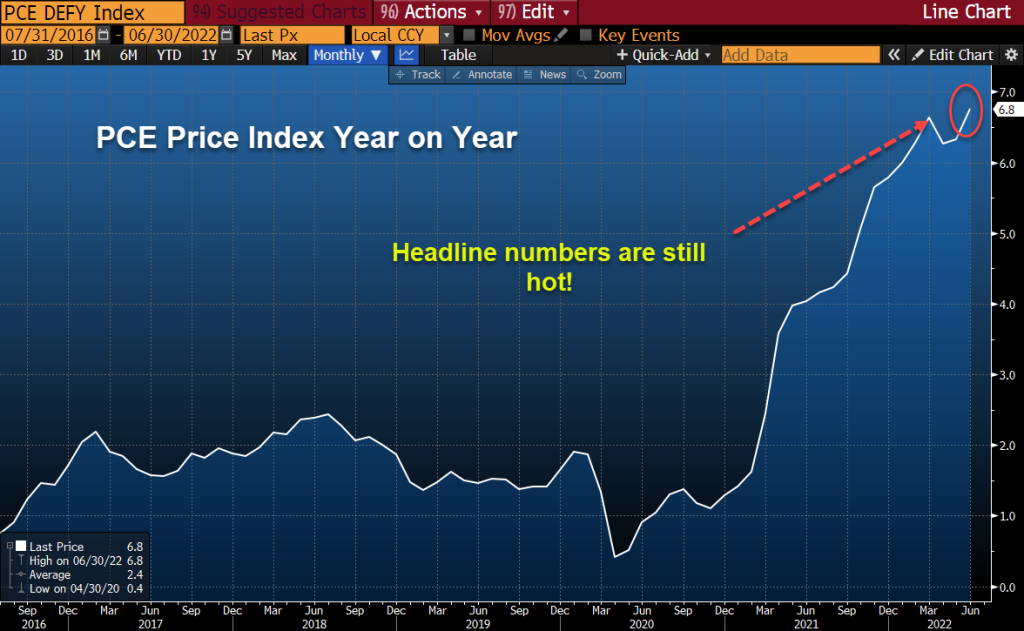
Data by Bloomberg
The PCE price index came in at +6.76% year on year followed by personal spending for June up +1.1% and the Employment cost index up +1.3%, all hotter than expected.
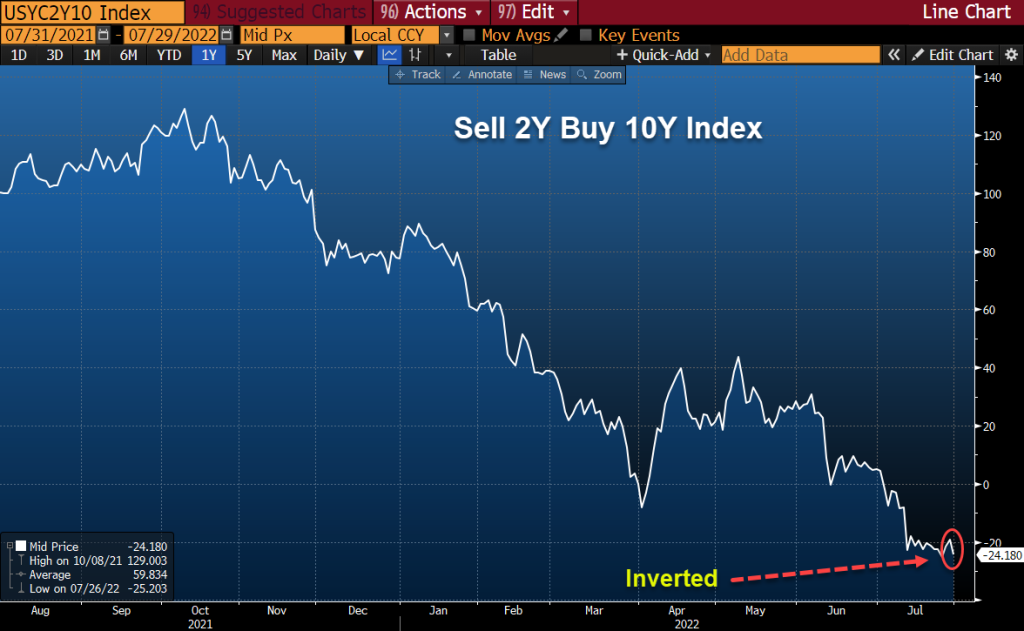
Data by Bloomberg
Fixed income markets spell out recession in the form of an inverted yield curve. The spread between 2 Year and 10 Year Yields is now -25 basis points.
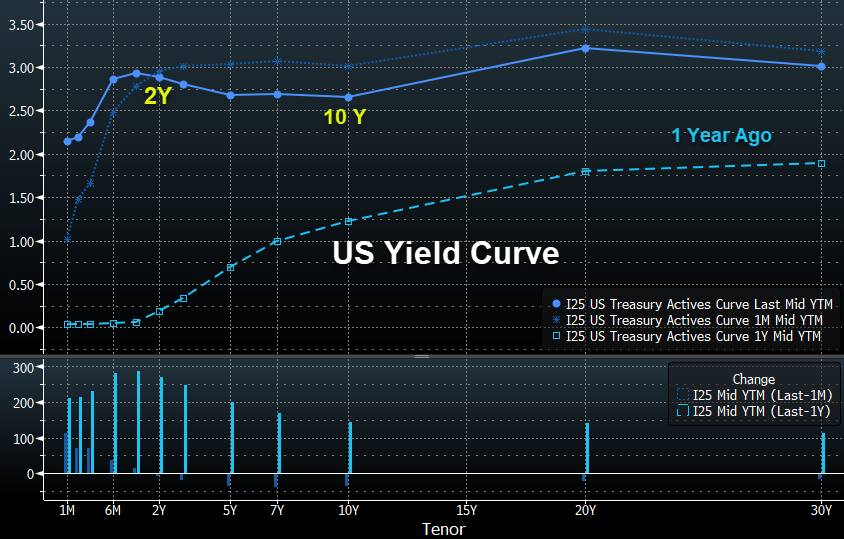
Data by Bloomberg
Treasury Secretary Janet Yellen calls it a transition and White House Economic advisor now says two negative quarters of GDP growth is not the technical definition of recession. Of course, he’s on record saying the exact opposite in 2008.
“Economists have a technical definition of recession, which is two consecutive quarters of negative growth,” Deese said at the time.
This is not 2008
I suppose the reason the administration is so adamant in redefining the term is that for most Americans you mention the word recession, they think of 2008 and the Financial Crisis.
What we’re experiencing today is nothing like that. 2008 was a credit event. Our financial institutions were close to insolvency. Then Fed Chair Ben Bernanke recognized the potential for financial collapse and introduced quantitative easing including policies like TARP the Toxic Asset Relief Program.
Unfortunately, the Fed kept giving medicine to a patient that had already recovered.
The Good News
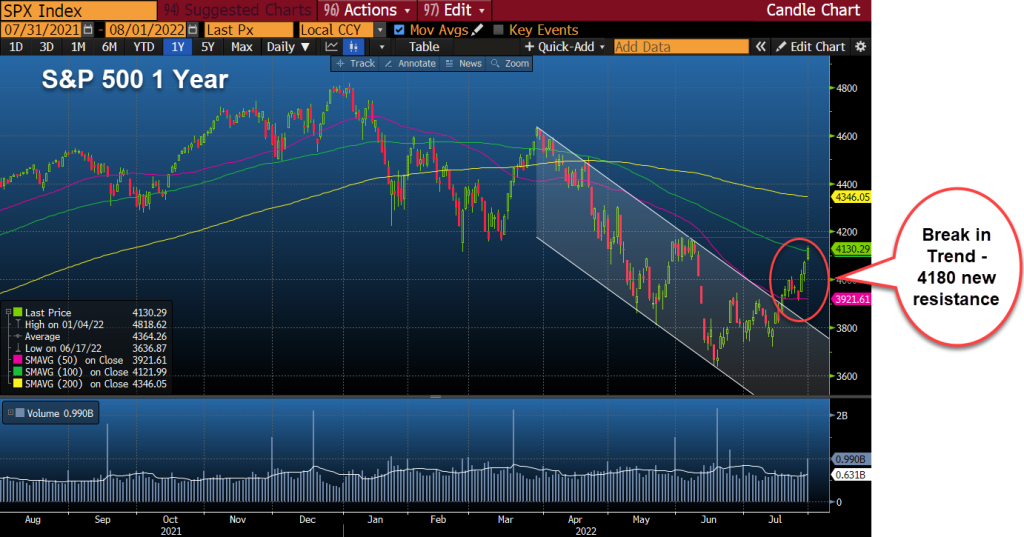
Data by Bloomberg
For equity investors the debate doesn’t matter. Stocks smelled out a recession early in the year and priced it in very quickly and already at least for the moment are looking through current conditions to the other side of the valley.
Stocks are a forward-looking mechanism and rebounded sharply in July off of the June lows. The S&P put in its best month since November 2020.
The break in the down trend from the March highs is notable and should be respected. Is it a bear market rally? Sure, it could be but one of these breakouts will be the real deal and it’s important we respect changes in trend
The charts say the offense is on the field. Fundamentals say we should be in the bunkers
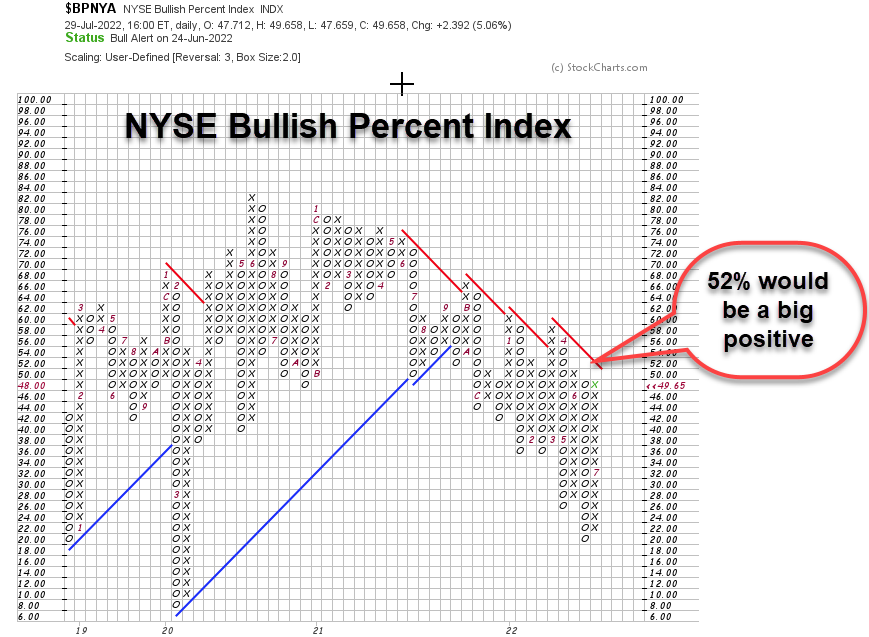
Data by Stock Charts
The New York Stock Exchange Bullish Percent index is in some ways a measure of sentiment and breadth in the market. The chart above is saying that close to 50% of stocks on the NYSE exchange have had a point and figure buy signal. When it is in a column of Xs and rising you want to have the offense on the field.
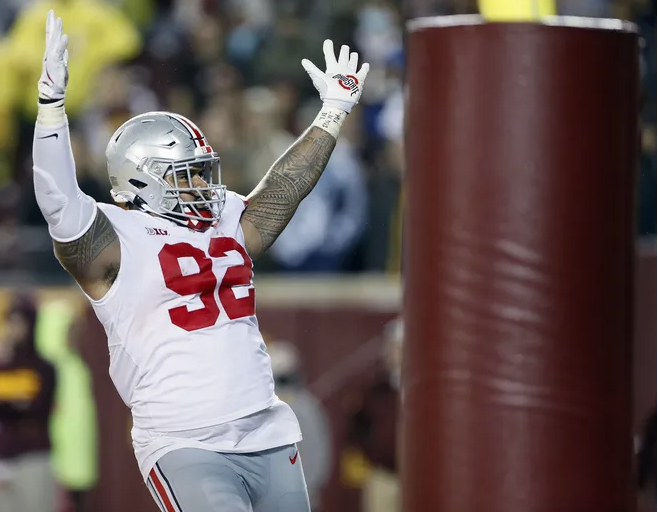 Not that different than sports. Even if you’re a lineman and the ball is fumbled right in front of you with no one around, you have to pick it up and make as much ground as you can.
Not that different than sports. Even if you’re a lineman and the ball is fumbled right in front of you with no one around, you have to pick it up and make as much ground as you can.
This signal has triggered three other times this year so remember it’s just a single data point.
Even in a bear market and an economic downturn you change tactics as the conditions change. When stocks stop going down on bad news it’s a good sign.
Last week some of the biggest companies on the planet reported earnings and the price action that followed spoke to all of the above.
After the close Tuesday Microsoft (MSFT) and Alphabet (GOOGL) reported and the numbers couldn’t have been worse. The two stocks soared the following day.

Data by Bloomberg
Both reports came in below expectations. Just about every line item for Mr. Softie was a miss. Frankly if they had reported a quarter like this a year ago the stock would have been down 15-20%.
Same on Friday for Amazon (AMZN) and Apple (AAPL). In fact, Apple profits were down 11% year on year.
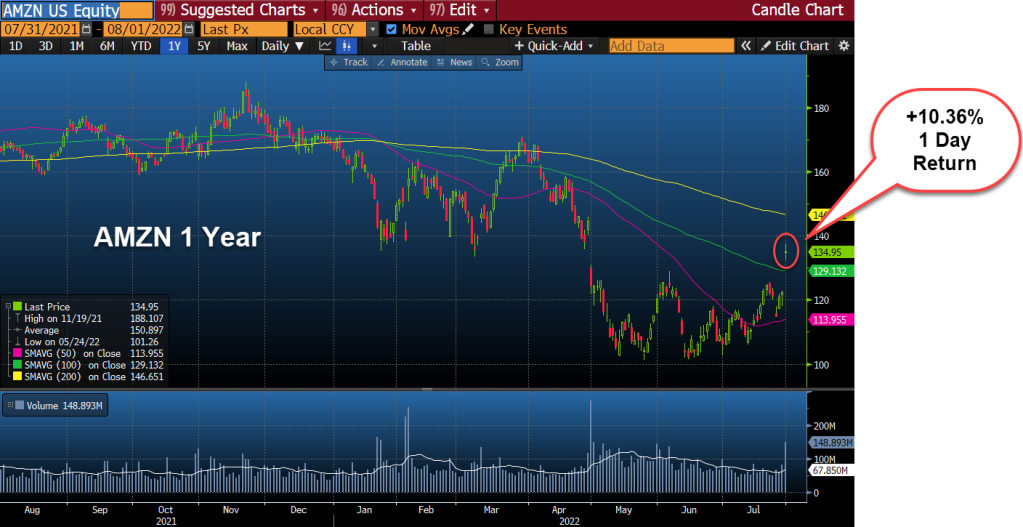
Data by Bloomberg
The net result was the same. Investors are looking through to the other side of this downturn eager to own these great companies, worried they might be forced to buy them at higher prices.
What’s next for the market?
It’s clear we’re giving stocks with business models we trust a pass for now but eventually even the most bullish will want to see confirming data to justify the exposure they added in July.
The biggest hurdle for continued price momentum to the upside is the Fed. In bull markets they tell you to not fight the Fed but that’s exactly what investors did in July, and it paid off. Last week’s inflation showed that at least to date there hasn’t been a let up and inflation is stickier than most believed.
Commodity prices coming in are a big positive but it’s important to remember the administration’s sale of 180 million barrels of crude from the Strategic Petroleum Reserve ends in a few months. Even if we make the case that we are at peak inflation, where will it settle out?
 Getting back to the Fed’s target of 2% seems a stretch. Jay Powell said during the press conference; “headline inflation is important for expectations…headline inflation is what people experience”
Getting back to the Fed’s target of 2% seems a stretch. Jay Powell said during the press conference; “headline inflation is important for expectations…headline inflation is what people experience”
In other words, we need to see inflation prints meaningfully come in before we can expect the Fed to take their foot off the brake. For the last 14 years we’ve had the comfort blanket of a Federal Reserve ready to step in and provide whatever support markets needed.
The Fed Put is not coming back! We no longer have the balance sheet or the deflationary backdrop to expect that level of support.
Both the economy and stocks are going to have to grow their way out of this economic hole.
*At the time of this article some funds managed by David were long AAPL, GOOGL, MSFT & AMZN